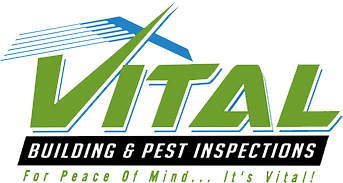Valuable information about asbestos to keep you and your family safe
Asbestos is a mineral that is not visible to the naked eye. Before being banned in Australia in 2003, asbestos was added to products to strengthen them and provide heat and fire resistance.
Asbestos in its raw form may appear in various colours like blue, yellow, red, white, green, and grey. The colour differs depending on the asbestos type. When processed, asbestos breaks down into fluffy fibre. It is odourless and invisible to the naked eye.
Risks associated with exposure to asbestos
All asbestos is dangerous. Prolonged exposure to asbestos risks illnesses like mesothelioma, lung cancer, laryngeal cancer, and ovarian cancer. Unfortunately, most asbestos-related diseases are only diagnosed at least 15 years after exposure.
Heavy short-term exposure to asbestos is known to cause diseases, such as asbestosis, pleural thickening, and pleural plaques. These diseases could also be an indicator of mesothelioma.
There is no test to determine if you have inhaled asbestos. However, there are tests to detect asbestos-related diseases. Your doctor may request image scans to reveal signs of these diseases. An annual screening conducted by a qualified pulmonologist is advisable.


Asbestos hazards in your home
In your house, some items that could contain asbestos are:
- Adhesives
- Cement
- Ceiling tiles
- Drywall
- Floor tiles
- Insulation
- Roof shingles
- Steam pipes
- Textured paint
Houses built before 1990 may contain asbestos, which may exist in any room in your home.
Be sure to watch out for potential hazards in the following areas:
- Hot water and steam pipes in older houses coated with asbestos material
- Vinyl floor tiles, vinyl sheet flooring, and adhesives
- Insulation in roofs and conduits and electrical meter boards
- Cement roofing, gutters, and downpipes
- Textured paint and patching compounds used on wall and ceiling joints
- Oil and coal furnaces and door gaskets
- Walls and floors around stoves protected with asbestos paper or cement sheets
How homeowners expose themselves to asbestos at home
Homeowners may not be aware that they are exposed to asbestos while doing the following tasks at home:
- Do-it-yourself renovation
A homeowner found piles of brown-like insulation while renovating his attic. He had no idea about asbestos. He decided to replace it with fiberglass insulation. He placed the loose insulation in a trash bag. While doing so, asbestos fibre spreads in the air.
- Brake dust in home garage
A car owner replaced his car’s worn-out brakes in his home garage. He blew off the dust covering the brake drums with an air compressor. Unknowingly, asbestos fibre flew into thin air.

- Removing vinyl floor tiles
A homeowner decided to replace the vinyl floor tiles in her kitchen. Her husband removed the existing tiles with a scraper before installing the new tiles. The couple was unaware that asbestos was a common ingredient in vinyl floor tiles of old houses. They did not know that using a scraper to remove old vinyl flooring can release asbestos fibre in the air.
- Popcorn ceiling removal
Tired of the popcorn texture on her ceiling, a homeowner scraped it off and repainted it with a smooth finish. She was not aware that many textured ceiling finishes concealed asbestos. Scraping off the popcorn finish released microscopic asbestos fibre in the air.
- Cutting insulation on pipes
A homeowner noticed that insulation around hot water pipes was deteriorating. He cut the old insulation and replaced it with fibreglass insulation. Cutting the damaged material released asbestos fibre into the air.
Asbestos exposure at home may also occur due to:
- A fire or natural disaster
- Flooding or water damage
- Aging or breakdown of the home

Safety tips for homeowners
- Homeowners cannot identify asbestos products on their own. That is why they have to seek professionals trained at identifying and confirming the presence of asbestos, including their current condition.
- Asbestos professionals are trained and certified in handling and proper disposal of hazardous products. They require specific packaging and labelling before disposing at designated areas.
- Find alternatives to asbestos. They have similar properties and less severe health effects. These alternatives may include:
- Amorphous Silica Fabrics
- Cellulose Fibbers
- Polyurethane Foam
- Flour Fillers
What to do if you suspect asbestos in your home
If you own a house built before 1980, chances are, the materials used contain asbestos. So, what are you going to do (and what not to do) if that is the case?
Do’s
- Hire highly trained professionals for asbestos testing, inspection, repair, and removal.
- Seek professional help in identifying which household items contain asbestos.
- Check material regularly if you suspect the presence of asbestos.
- Avoid contact with damaged asbestos materials.
- Take care not to damage any materials containing asbestos.
- Contact an appropriate regulatory agency in your locality if you plan to conduct a demolition.

Don’ts
- Don’t work on any asbestos material if you are untrained and uncertified.
- Don’t touch or disturb slightly damaged asbestos material.
- Don’t dust, vacuum, or sweep debris that may contain asbestos.
- Don’t saw, sand, scrape, or drill materials.
- Don’t collect asbestos samples for testing if not trained.
- Don’t dispose of asbestos materials with household waste.
- Don’t remove asbestos unless repair and concealment are impossible.
Qualified building inspectors can conduct asbestos inspections.
Safety and peace of mind should always be a top priority for homeowners and tenants.
As a homeowner, you need trained professionals to inspect the house for any hazardous elements lurking around the corner. You do not want odourless and unseen fibre flying around the house – especially fibre in the form of asbestos.
Don’t panic! Instead, call Vital Building Inspections Sydney. As a trusted name in building inspections in Sydney, you can rely on our highly trained and certified professionals to help you assess and address safety and property concerns.
Get a free quote today by calling 0401 012 074 or sending an email to support@vitalbuildinginspection.com.au.






